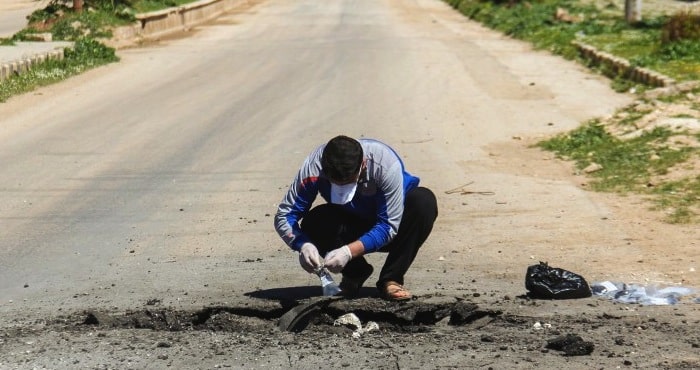If there was a centerpiece to Hillary Clinton’s failed campaign for President of the United States, it was her struggle to convince the American people that Donald Trump was congenitally incapable of reacting rationally when surprised by a dangerous international crisis. She struggled futilely to contrast her experience and gravitas to Trump’s reckless impulsiveness. In a rational world, the recent Trumpian brain fart of firing 59 cruise missiles (worth about $90 million) at a nearly empty — and forewarned — Syrian airfield should be a candidate case study to test Clinton’s psychological theory. But it won’t be. Mr. Trump merely did what Ms. Clinton called on him to do (see this video) a few hours prior to the attack. Moreover, the political response to Trump’s attack has been one of widespread bipartisan support, with particular enthusiasm among senior Democrats [e.g, see 1, 2 3].
Trump’s cruise missile attack was launched in reaction to the unproved (at least the American public has not been presented with the proof of) allegation that President Assad of Syria dropped poison gas bombs on his own people in Idlib province. This link will take you to an official statement of the assertions that now pass for evidence supporting the allegation. Note the absence of photographic evidence of the mass casualties would attend any attack by weapons-grade sarin gas in a populated area.
So, Trump’s allegation is a hypothesis taking the form of a narrative. Bear in mind a “narrative” is simply a story consisting of real or imaginary connected events. In this case, there are at least two alternative hypotheses, each made plausible in part by the limited nature of this particular gas horror: One alternative hypothesis is that the chemical release was a false flag operation concocted by jihadi rebels to trick the US and its allies to more actively join their war for regime change in Syria. Another alternative hypothesis is that Assad’s Air Force unwittingly bombed a Jihadi ammo dump containing chemical weapons. The rebels have long been suspected of having access to a primitive chemical weapons capability that would be more consistent with the nature of civilian deaths than would be the case if Assad used of weapons-grade sarin gas as suggested by Hillary Clinton and the White House. The simple fact is that the American people have not been presented with a “slam dunk” proof of which, if any, of these hypotheses is closest to being the truth. For now, the proof is “trust us.”
There is, however, a reason to be suspicious of the government’s claims: Ted Postal, MIT Emeritus Professor of Science, Technology, and National Security Policy just released a scathing critique of the White House “narrative.” Moreover, American politicians have a long and sordid history of manipulating public perceptions and constructing “narratives” with regard to the use of poison gas to kill large numbers of defenseless civilians in the Middle East. This article by my good friend Andrew Cockburn offers an important reminder in this regard. Andrew’s subject — poison gas, war in the Middle East, and the malleable bipartisan utility it has offered to cynical US politicians — is a dispassionate warning that is particularly timely, given the hysterical nature of contemporary political debate in the United States. It is leanly written but chock a block with information about real — not imaginary — events. It is worth careful study.
Reprinted with author’s permission from The Blaster.



